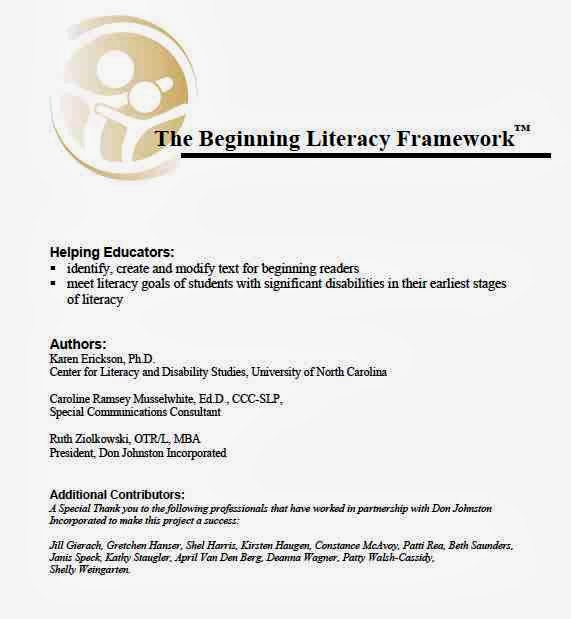Download the document here
Beginning Literacy Framework
It's very important for our students who are struggling to become readers to have access to various text types:
Enrichment Texts are designed to:
• Develop language
• Build background knowledge
• Support learning concepts about print and the reading experience
• Engage and develop the love of reading
(From Beginning Literacy Framework, p. 4)
These books are typically read to students. They often include vocabulary that might be new to students, such as 'They roared their terrible roars. They gnashed their terrible teeth.' A good example for young children would be 'Where the Wild Things Are' by Maurice Sendak.
Transitional Texts are designed to:
• Provide an increased focus on text, rather than the language and graphics components
• Support students in using the skills and strategies they developed through experiences with enrichment texts and other print-based activities
• Support students in developing simple word-reading strategies
(From Beginning Literacy Framework, p. 5)
These books include a strong predictability component. Students often use picture + pattern to help them read these books. Sometimes, it's hard to tell whether the student is actually reading individual words, or using memory (of the story pattern) plus graphics. A great example for young children would be 'Brown Bear, Brown Bear', by Bill Williams Jr. The student can use the pattern of COLOR + ANIMAL (ex: Blue horse, blue horse, what do you see).
Conventional Texts are designed to:
• Introduce new vocabulary within controlled text
• Foster word recognition and decoding skills
• Remove predictability, helping students apply knowledge about sentence structure
(From Beginning Literacy Framework, p. 6)
Conventional books follow the 'made you look' principle, in which students must look at all words in order to read the text. Graphics may still be used to provide support for more difficult words. Students who have significant disabilities often do not get enough of these books.

No comments:
Post a Comment
Note: Only a member of this blog may post a comment.